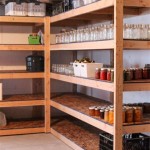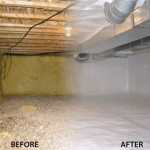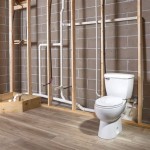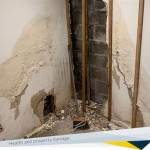What Is a Good Humidity Setting for a Basement?
Basements, often considered the forgotten spaces of a home, are susceptible to various problems, including excessive humidity. Maintaining a comfortable and safe environment in the basement requires understanding the ideal humidity range and employing effective strategies to achieve it. This article explores the importance of humidity control in basements, outlines the optimal humidity setting, and discusses methods for achieving and maintaining it.
Understanding Humidity and Its Impact on Basements
Humidity refers to the amount of moisture present in the air. While some humidity is natural and necessary, excessive levels can create problems in basements. High humidity in basements can lead to several issues, including:
- Mold Growth: Mold thrives in damp environments, so high humidity creates ideal conditions for its growth. Mold can cause respiratory problems, allergies, and even serious health issues.
- Musty Odors: Excessive moisture contributes to a musty smell, making the basement unpleasant to occupy.
- Wood Rot and Damage: High humidity can cause wood to rot and deteriorate, damaging structural elements, furniture, and other belongings.
- Pest Infestations: Pests like termites, cockroaches, and silverfish are attracted to damp conditions, increasing the risk of infestation.
- Uncomfortable Living Conditions: High humidity can make the basement feel uncomfortable, sticky, and stuffy, making it unsuitable for living or recreational purposes.
Conversely, excessively low humidity can also be problematic. Dry air can lead to static electricity, dry skin, and respiratory issues. However, the primary concern in basements is generally high humidity.
The Ideal Humidity Setting for Basements
The ideal humidity level for a basement is generally considered to be between 30% and 50%. Maintaining this range helps prevent mold growth, minimize musty odors, and create a comfortable environment. However, the optimal humidity level may vary slightly depending on factors such as:
- Climate: Basements in humid climates may require a slightly lower humidity setting than those in drier regions.
- Usage: Basements used for living spaces, storage, or workshops may require different humidity levels.
- Personal Preferences: Some individuals may prefer slightly higher or lower humidity based on comfort levels.
It's essential to consult with a qualified professional to determine the most appropriate humidity setting for your specific basement, considering local climate, usage, and any existing issues.
Methods for Achieving and Maintaining Ideal Humidity
Several methods can help achieve and maintain the ideal humidity level in a basement:
- Dehumidifier: A dehumidifier is a highly effective way to remove excess moisture from the air. Choose a dehumidifier appropriate for the size of your basement and ensure it's properly sized for the amount of moisture it needs to remove.
- Ventilation: Proper ventilation can help reduce humidity by allowing fresh air to circulate. Open windows when weather permits and use exhaust fans in areas like bathrooms and laundry rooms to remove moisture-laden air.
- Moisture Control: Address sources of moisture in the basement, such as leaky pipes, cracks in the foundation, and inadequate waterproofing. Repair leaks promptly and seal any cracks to prevent moisture intrusion.
- Insulation: Insulating the basement walls and ceilings helps prevent condensation and keeps the basement dry.
- Proper Drainage: Ensure that gutters and downspouts direct rainwater away from the foundation and that the surrounding ground slopes away from the basement walls.
Regularly monitoring the humidity level with a hygrometer can help identify fluctuations and ensure the dehumidifier is working effectively. Additionally, it's important to clean and maintain the dehumidifier regularly to ensure optimal performance.

Dehumidifier Setting Chart What Should Be Set At

How To Achieve An Ideal Basement Humidity Of 30 50

What Is The Ideal Basement Humidity Level Epp Foundation Repair

How To Achieve An Ideal Basement Humidity Of 30 50

Relative Humidity Chart For Ideal In The House

How To Achieve An Ideal Basement Humidity Of 30 50

Hot In Here How To Maintain Ideal Indoor Humidity Summer

Ideal Basement Humidity Expert Recommendations

Ideal Basement Humidity And How To Achieve It Epp Foundation Repair

How To Lower Your Basement S Humidity Level
Related Posts







